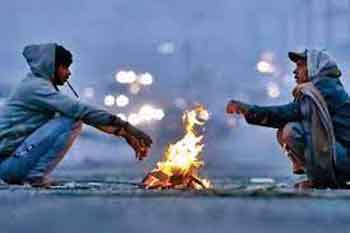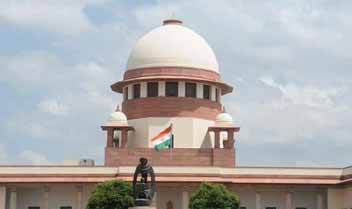INVC NEWS
New Delhi : Western disturbances are a common meteorological phenomenon that significantly impact weather patterns in various regions, particularly in South Asia. These disturbances originate in the Mediterranean region and travel eastwards, influencing weather conditions across Afghanistan, Pakistan, and northern India. In recent observations, a western disturbance has begun forming as a trough over Afghanistan and adjoining Pakistan. This disturbance has prompted changes in wind direction, leading to a gradual increase in temperatures across affected areas.
Winds of Change: Southern and South-Eastern Transformation
The palpable effect of the forming western disturbance is evident in the changing direction of winds. As they veer towards the southern and south-eastern compass points, a domino effect ensues. The temperature, too, responds in kind, embarking on a gradual upward trajectory. This climatic metamorphosis has recently manifested itself, with a noticeable increase in minimum temperatures across the landscape.
Temperature Surge: A Friday Revelation
Last Friday bore witness to a notable uptick in minimum temperatures, painting the geographical canvas with a warmth that transcended borders. Save for a select few cities, the mercury rose perceptibly everywhere else. Notably, in Narmadapuram, Indore, and Narsinghpur, the minimum temperature held its ground below the 10 degrees Celsius mark, establishing a localized exception.
Meteorological Insights: A Glimpse into the Future
Meteorologists, seasoned custodians of atmospheric secrets, predict that this temperature trend might persist for the next one or two days. A welcome reprieve from the harsh cold may be in the offing as the mercury continues its ascent. Insights from the Meteorological Department offer a snapshot of the last 24 hours, indicating predominantly dry weather across the state’s divisions. Seoni experienced a cold wave, Khandwa, Khargone, and Datia had a cool day, and moderate to dense fog enveloped several districts.
Foggy Mornings: Navigating Reduced Visibility
In the past 24 hours, the landscape embraced varying degrees of fog, from moderate to dense, in districts such as Morena, Bhind, Gwalior, Datia, Niwari, Rewa, and Mauganj. Sheopur Kalan, Shivpuri, Tikamgarh, Chhatarpur, North Panna, and North Seoni encountered light to moderate fog. The thick fog cover posed challenges with visibility, dropping below 50 meters in Datia, Nagaon, and Rewa, 100 meters at Gwalior airport, and 500 meters at Khajuraho airport.
Chilled Chronicles: Temperature Records Across the State
Pachmarhi claimed the title of the coldest spot in the state, recording a minimum temperature of 3.8 degrees Celsius. Khajuraho, not far behind, registered a night temperature of 4.5 degrees Celsius. Bhopal, the capital city, experienced a minimum temperature of 9.2 degrees Celsius on Friday, representing a 0.6-degree increase from the previous day but still maintaining a 1.2-degree Celsius difference below the normal range.
Meteorological Prowess: Cyclones and Troughs
Former senior meteorologist Ajay Shukla sheds light on the intricate dance of cyclones in the upper layers of the atmosphere. A cyclone formation over Karnataka has spawned a trough extending to Odisha, traversing through Chhattisgarh and Vidarbha. Simultaneously, a cyclone graces the upper layers of north-eastern Rajasthan. These atmospheric phenomena have ushered in clouds at higher altitudes, providing a visual spectacle of nature’s prowess.













